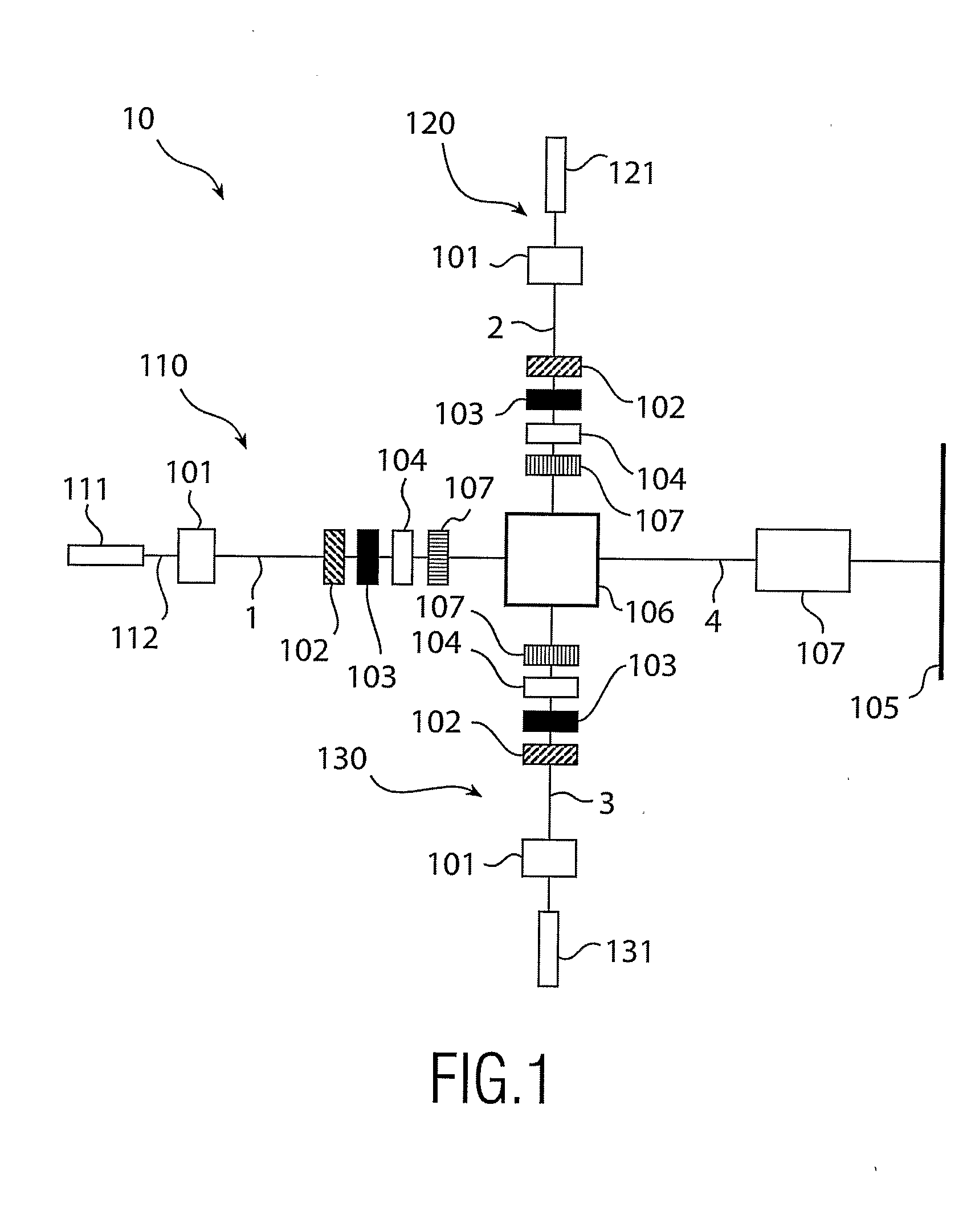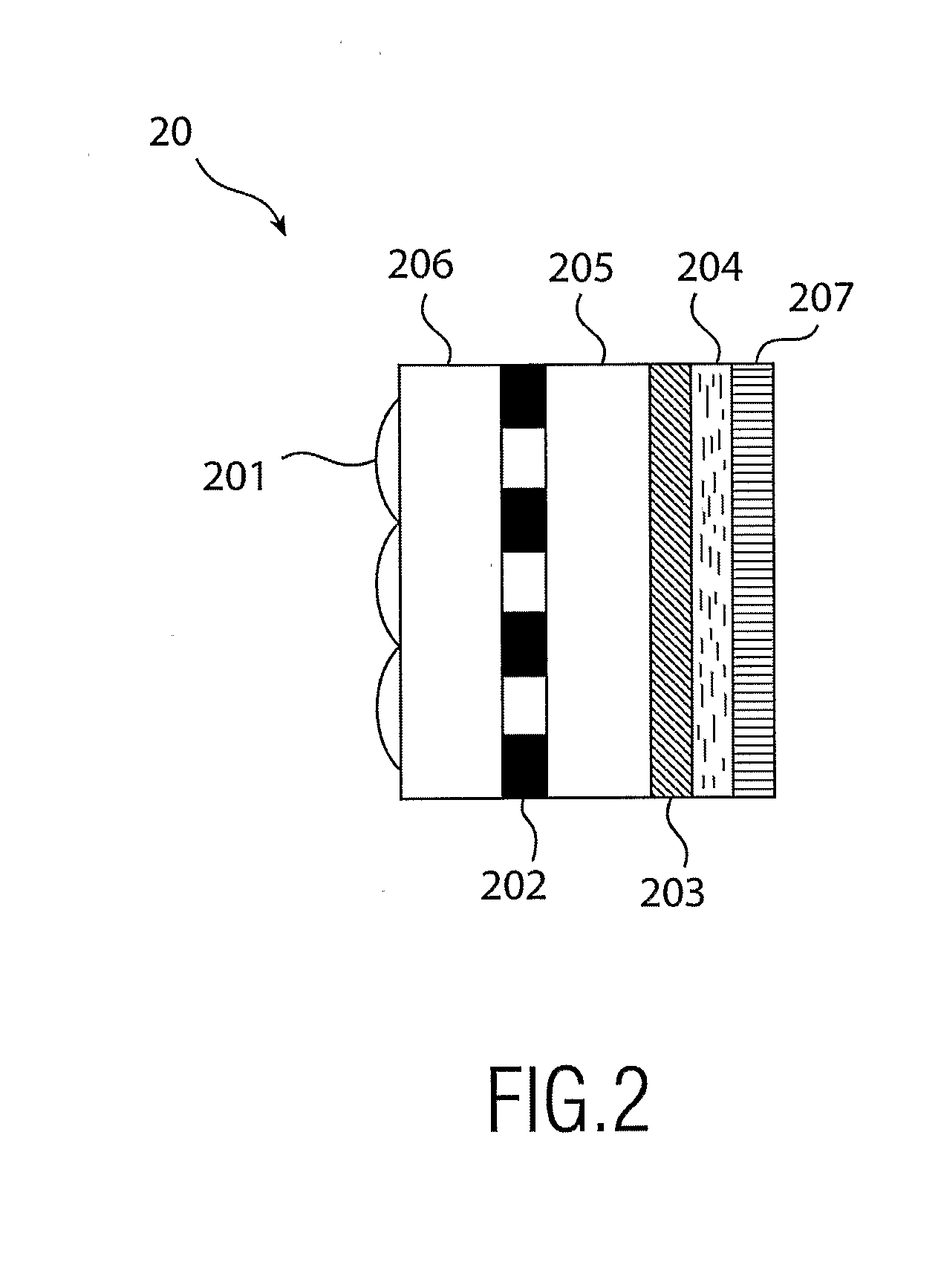Projector system
a projector and projection system technology, applied in projectors, color television details, instruments, etc., can solve problems such as optical visible faults, and achieve the effects of avoiding high-in-line transmission, reducing the visibility of speckles, and eliminating or reducing the broadening of ligh
- Summary
- Abstract
- Description
- Claims
- Application Information
AI Technical Summary
Benefits of technology
Problems solved by technology
Method used
Image
Examples
Embodiment Construction
[0007]An object of the present invention is to provide an improved optical arrangement for use in an image projection system with a low etendue illumination system, particular a laser based projection system.
[0008]In this description a low etendue illumination system is a system having a confined and narrow beam emitted from a light source or a light source system, such as a laser based light source.
[0009]A small etendue causes a large field of depth in the optical system. Thus, imperfections in the optical path such as dust particles, scratches, obscurations, and material defects will be strongly visible in the projected image. Overcoming this by using extremely high quality optical materials is very costly.
[0010]The invention is based on an insight that by use of a diffuser arranged on the light outgoing side of an LCD panel in an image projection system, which comprises a laser based illumination source, the quality of the projected image can be improved. Advantageously, the diff...
PUM
 Login to View More
Login to View More Abstract
Description
Claims
Application Information
 Login to View More
Login to View More - R&D
- Intellectual Property
- Life Sciences
- Materials
- Tech Scout
- Unparalleled Data Quality
- Higher Quality Content
- 60% Fewer Hallucinations
Browse by: Latest US Patents, China's latest patents, Technical Efficacy Thesaurus, Application Domain, Technology Topic, Popular Technical Reports.
© 2025 PatSnap. All rights reserved.Legal|Privacy policy|Modern Slavery Act Transparency Statement|Sitemap|About US| Contact US: help@patsnap.com



